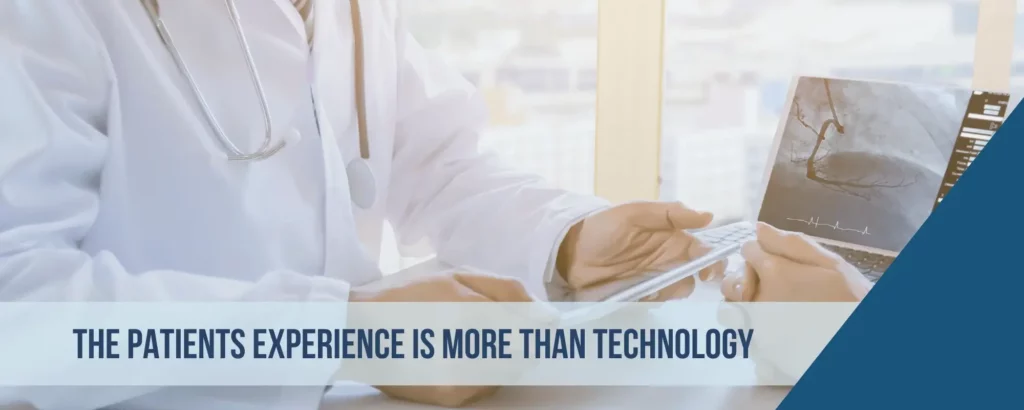
How To Improve Patient Experience?
Patient experience is a critical thing in healthcare. Whether a patient gives within the emergency room or for a routine visit, a practical experience facilitates treatment follow-through and agreement with their clinician. As clinicians and healthcare administrators, we must prioritize the patient experience as an essential step within the continuum of care. To assist, we’ve gathered ten suggestions to enhance the patient experience.
Patients Are Consumers
In health care, the phrases patient and client have been regularly seen loosely related. A patient is a term carried out to someone receiving fitness care. A client is someone who makes a selection about obtaining a very good or a carrier after which proceeds (or now no longer) to accept it. Health care carriers have traditionally been involved with patients; however now no longer with clients.
Many pages despised the word “client” or “customer,” feeling that the period cheapened their abilities and importance. The result has been an emphasis on hospital treatment at the excellent of the technical factors of care (diagnosis and treatment) and a near denigration of the client factors of fitness and health care (convenience, low cost, and friendly). However, patients are clients all the time while making all types of choices about their health and fitness care — e.g., whether or not to seek extra care, change physicians, take their medications, or stop smoking.
As fitness care progressively moves to value-based care, where reimbursement is tied to results and patient satisfaction, carriers can be held chargeable for the fitness-related decisions of clients. Health structures are best belatedly spotting the want to offer special hospital treatment and a splendid client experience — that appearing poorly in a single position will affect overall performance with inside the difference. The hospital treatment can be world-class.
However, if the experience is dreadful, the patient may seek care elsewhere or tell friends and circle of relatives that they need to keep away from doctor. The clinician may also have evolved a unique plan for patients to assist them in controlling chronic disease. However, if the motivational aid is lackluster and the technique of scheduling routine follow-up appointments is convoluted, adherence will probably fall by the wayside.
The Patients Experience Is More Than Technology
The client expects extra than the ability to apply an electronic-health-statistics portal to examine a dozen blood check consequences they don’t understand; they assume to be knowledgeable if they’re OK, what needs to the consciousness, and what needs to happen next. Consumers choose carrier organizations on the idea of the overall performance of a small wide variety of strategies.
The client expects extra than the ability to apply an electronic-health-statistics portal to examine a dozen blood check consequences they don’t understand; they assume to be knowledgeable if they’re OK, what needs to the consciousness, and what needs to happen next. Consumers choose carrier organizations on the idea of the overall performance of a small wide variety of strategies.
A restaurant is judged based on the process of menu design, meal training, and waiter carrier. A client/patient evaluates a provider based on the accessibility of care, the technical and human additives of care delivery, and the control of payment for care. An outstanding client experience calls for the thoughtful analyses of those middle strategies and the professional application of technology, technique change, culture change, and the strengthening of accountability.
The Range Of Patient-Centric Processes Is Broad
Most carriers focus on the usage of virtual tools to enhance the patient/client experience has focused on finding a doctor and traveling to their workplace. However, the client/patient experience encompasses an in-depth variety of interactions patients have with many care venues throughout the fitness care ecosystem. The interactions arise while traveling with a member of the family in an intensive care unit (ICU), with inside the discussions of possible medication aspect effects, during the conversation with a consultant about medical trial possibilities, and at the same time as asking a volunteer about directions to the medical laboratory.
Advances in sensors, mobile gadgets, and telehealth technology will permit the places of care and fitness control to increase properly past traditional facilities. Courtesy of the pandemic, telehealth has long passed from being an afterthought for carriers to a middle manner of getting access to care.
Many fitness systems are piloting handing over care at a patient’s home that has been traditionally brought at a hospital; care is focused on situations with described treatment protocols together with congestive heart failure, chronic obstructive pulmonary disease, and community-acquired pneumonia. Testing historically accomplished at a doctor’s workplace is an increasing number being completed at home; examples consist of exams for colon cancer screening, genome composition, and microbiome composition.
These new venues of care bring new possibilities and demanding situations for the patient/client experience, inclusive of strategies together with offering technical support for wearable devices, helping the logistics of specimen series from a home colon-most cancers test, and making sure high-quality remote doctor insurance of a patient being cared for pneumonia at home.
Tech Advances Provide More Opportunities To Deliver Exceptional Experiences
Consumers assume that fitness care will leverage technological advances, as different industries do. Artificial intelligence has made cars safer. Mobile devices have eased the strategies of coping with flights and checking accounts. Borrowing from the experiences and information of different client industries, carriers will use statistics about clients to tailor their care and other interactions associated with their health.
The tailoring will leverage statistics from the electronic health record, social determinants of fitness, and patient-reported results to customize messages, treatment options, fitness renovation suggestions, and lifestyle-change programs. Clinical and administrative strategies leveraging AI-based technique automation can be extra intelligent. For example, many fitness care digital applications allow a client to discover and book an appointment.
However, the client has to do the looking for availability. In the following generation, the applications will suggest appointment times and places and indicate whether or not the appointment may be virtual or in person. Providers additionally want to consider how they will employ the expanding array of unique wearable technology to create a digitally based experience.
Indeed, there was an explosion in the use of wearable devices, which use increasingly sophisticated sensors and artificial intelligence to measure and assist control diabetes, heart disease, and neurocognitive issues with Parkinson’s and Alzheimer’s. Digital treatment options are also available for mental fitness afflictions with depression, anxiety, and substance abuse.

Jessica Collins
Jessica Collins is a Certified Professional Coder (CPC) specializing in medical billing services and revenue cycle management (RCM). She works closely with healthcare providers and medical billing companies to streamline claim processing, reduce denials, and enhance reimbursement efficiency.









